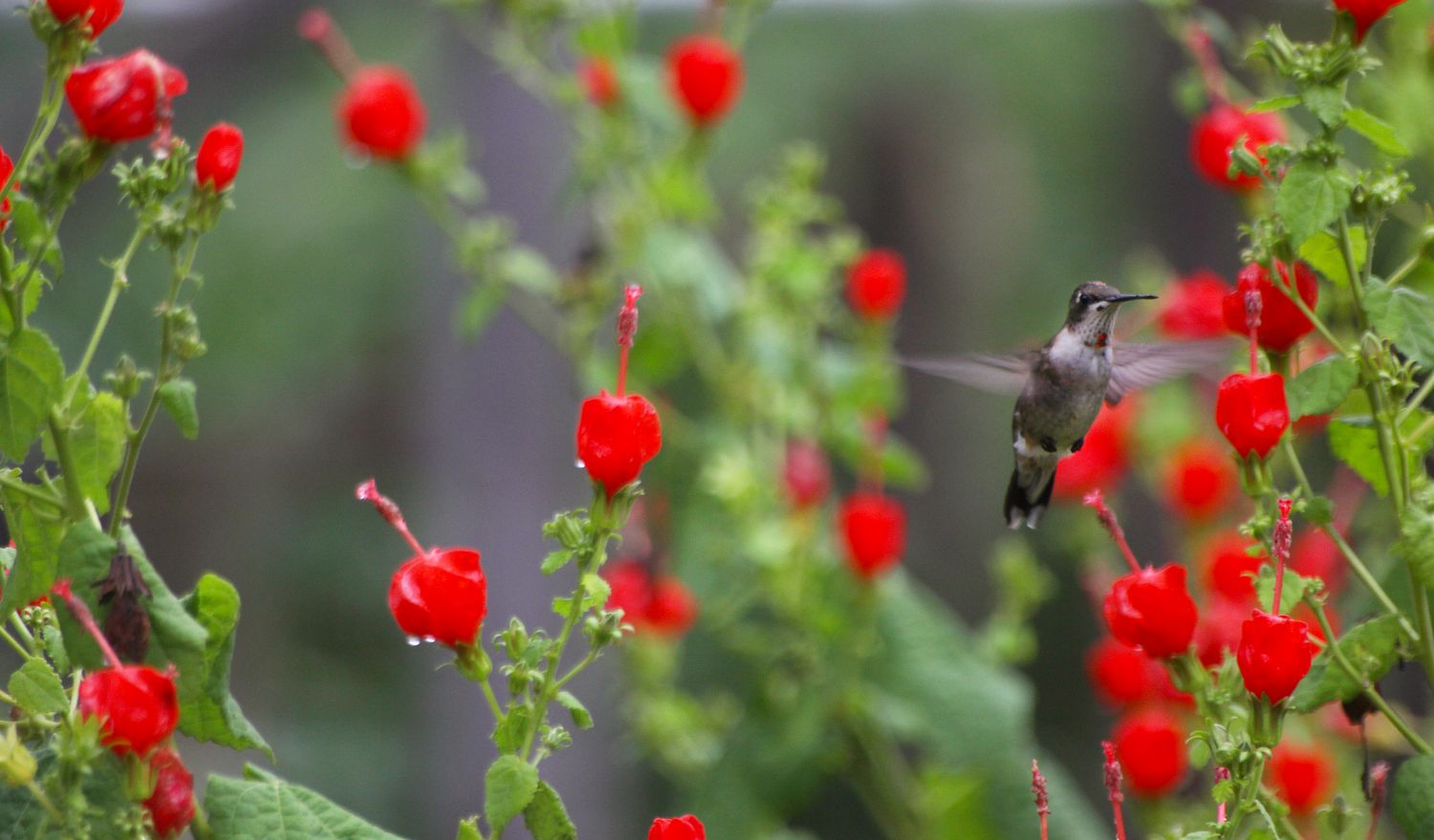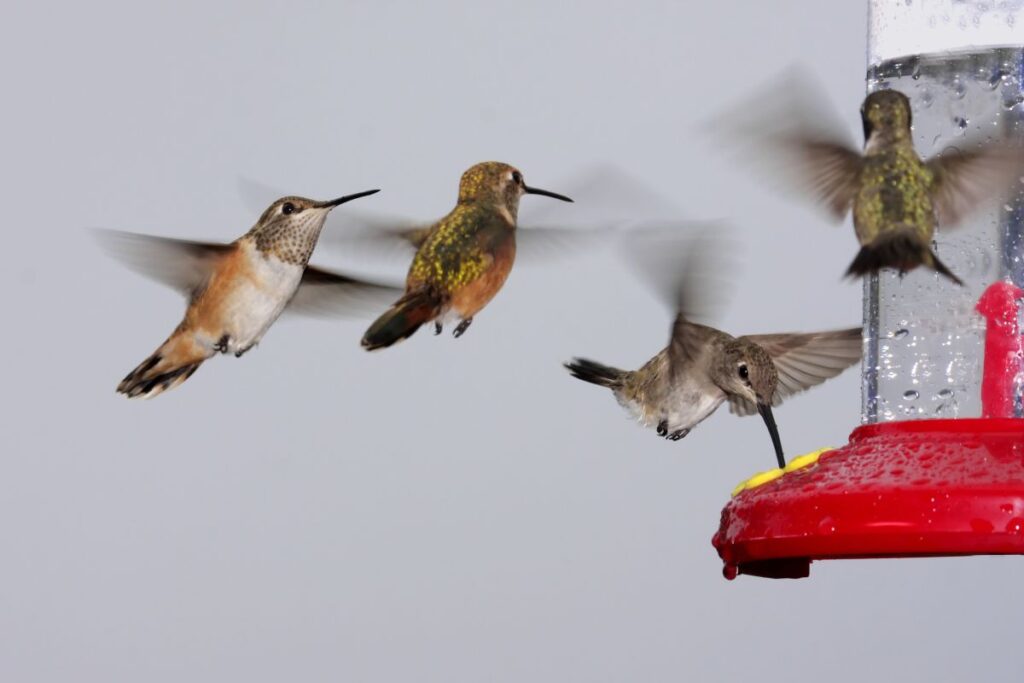
I witnessed a vicious assault today. My resident male hummingbird launched a full frontal attack on two females that are frequent visitors. Usually he simply asserts his dominance, then flies off and lets them eat. Today was different.
Today he stood guard over the feeder, mercilessly chasing them until, utterly exhausted, they left. As heartless as his actions seemed in human terms, in hummingbird terms, it makes perfect sense. Here in central Missouri, September and October are the months in which hummingbirds prepare for migration, increasing their body weights by 40% or 50%.
At first glance, increasing body weight seems counterproductive. Logic says that increased weight would make the journey even more difficult. The truth is that the birds are storing needed energy for their grueling trek. Not only is the trip long – often over 2000 miles – but it takes a tremendous amount of energy for these tiny birds to complete their solitary flights. While in flight, their wings flap an average of 80 times per second and their hearts beat at a rate of 1,260 times per minute.
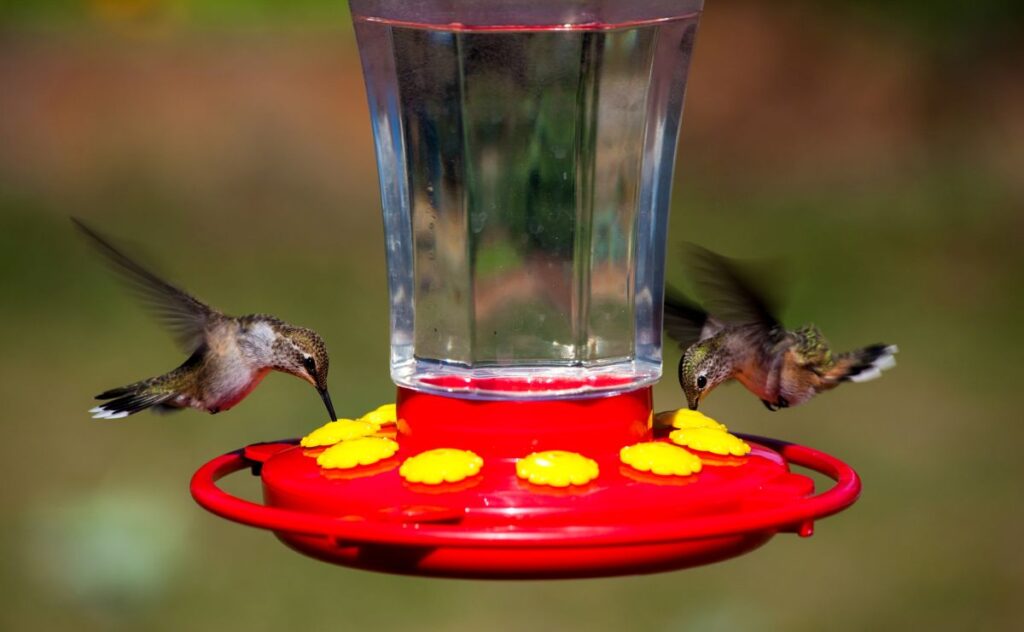
Although they usually travel about 20 – 23 miles a day, stopping frequently for food, the birds are capable of flying much longer distances when necessary. When crossing the Gulf of Mexico, for example, some species fly over 500 miles in a single session in order to reach their winter habitats.
Hummingbirds instinctively follow the same migratory route every year.They tend to fly relatively low, close to tree tops. Researchers believe this behavior allows them to easily spot food sources. Since they travel the same route, researchers have also determined that they are likely to revisit places in which they previously found food. It is crucial then, that feeders remain in place filled with clean, fresh nectar throughout the entire fall season. Nectar filled feeders do not keep hummingbirds from migrating. Instead, the feeders help keep migrating birds well nourished.
Adding fall flowering plants, especially native varieties, is beneficial not only for hummingbirds, but also for other late season pollinators. As summer blossoms fade away, many of the late visiting birds and insects are scrambling to acquire high quality nutrients that will sustain them over the winter months.
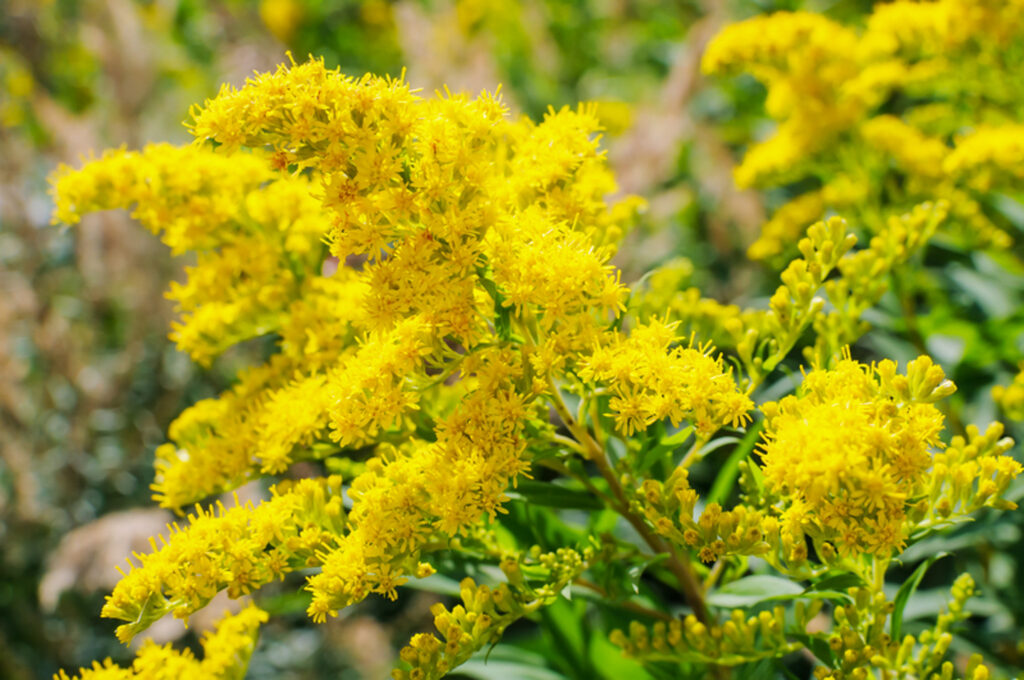
Asters, Goldenrod and Ironweed are great fall choices, having rich nectar and accessible shapes. Mums, because of their highly cultivated, doubled form, are less likely to appeal to migratory hummingbirds.
During migration season, hummingbirds tend to feed heavily in the morning, spend the middle portion of the day traveling and then feed heavily again in the late afternoon and early evening. While nectar from flowering plants or feeders is an essential, and enjoyable, part of their diets, 80% of a hummingbirds’ diets are made up of small insects and spiders, They routinely eat flies, mosquitoes, aphids, gnats, caterpillars and beetles. A successful feeding station for migrating birds then has an abundance of insects as well as nectar filled feeders. Limiting the use of toxic pesticides during the growing season can encourage a healthy, balanced ecosystem.
Another essential for migratory hummingbirds is safe shelter during inclement weather. Sometimes heavy rain, unexpected snow or extended freezing temperatures can put a temporary halt to migration. Hummingbirds will try to find a “safe” area for a week or two while they wait for flying conditions to improve. If they happen to get caught in an area during an unexpected cold snap, the birds will take refuge in the most sheltered space they can find.
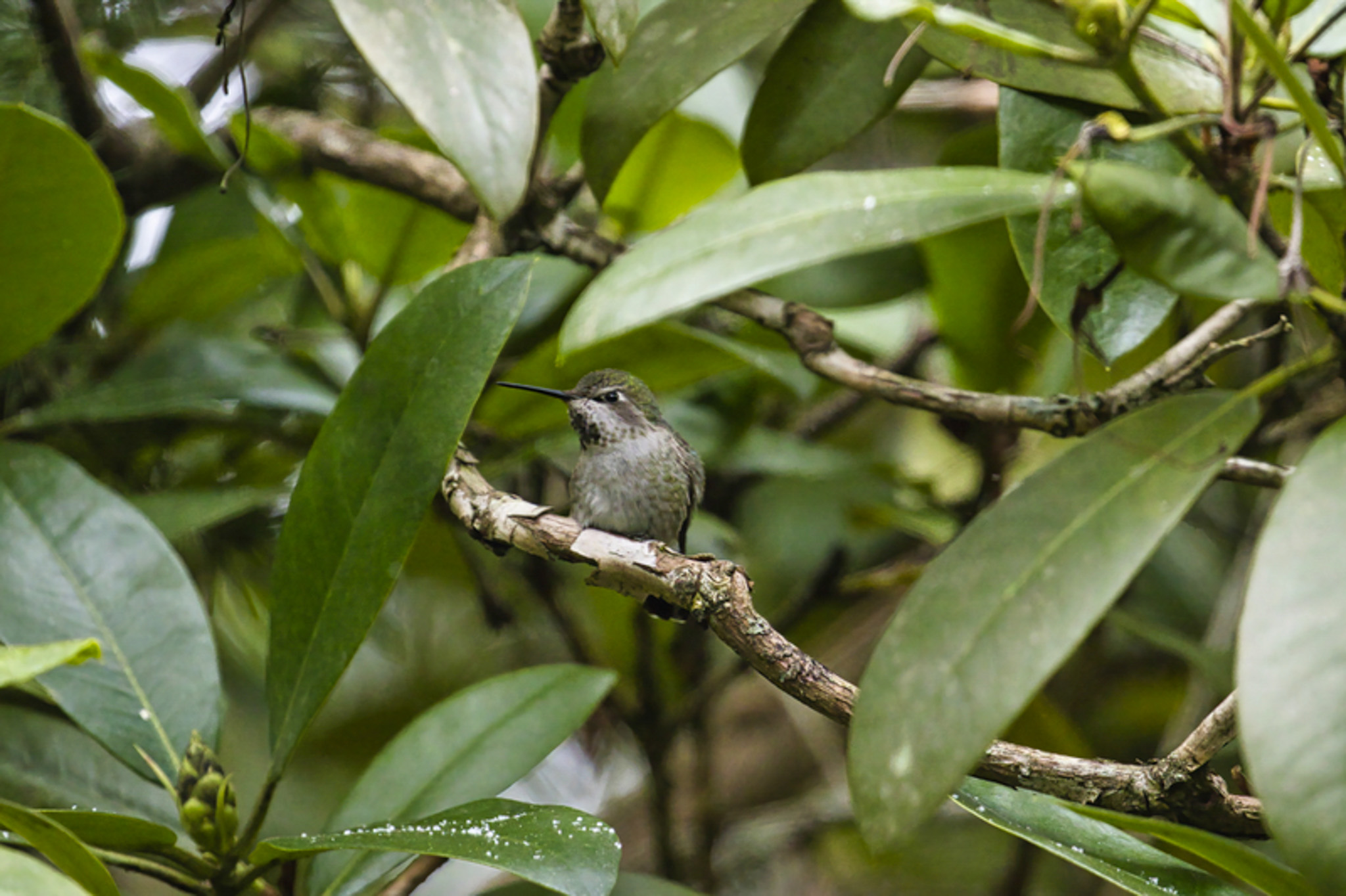
Usually, they look for small crevices or thick vegetation in the downwind side of a tree trunk. In worst cases, they can enter into a state known as torpor. While in torpor, a hummingbird lowers its temperature, slows its breathing and heart rate and ceases any non-essential activity, living off of its accumulated fat. Once conditions improve, the bird will resume its normal feeding and migration patterns. Birds in torpor should be left alone; attempts to rescue it will most likely kill it.
There are currently 16 species of hummingbirds that routinely appear in the continental United States. According to The American Bird Conservancy, six of the 16 species are experiencing seriously decreasing populations and are likely to become threatened or endangered within the next few years. Like so much of our natural world, hummingbirds are beginning to suffer from the results of human activity. Habitat destruction and loss, exposure to toxins, air and water pollution as well as the subtle impacts of climate change are contributing to the decline in numbers.
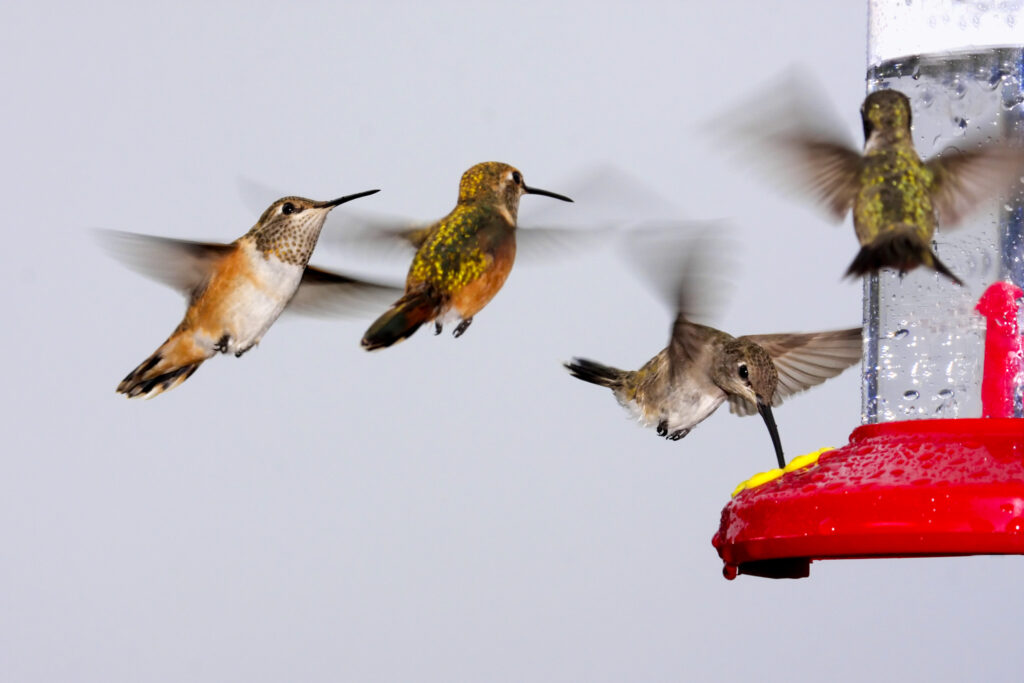
I hate to imagine a world without these entertaining creatures clustering around my feeders. Let’s work together to keep our tiny visitors well fed and protected so they can continue to bring their delightful bird chaos to our yards. Keep the flowers blooming, the feeders up and the fresh nectar coming. The birds will love you for it.
